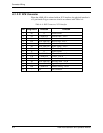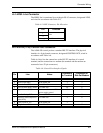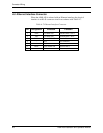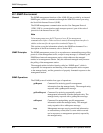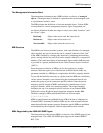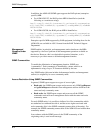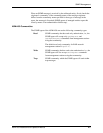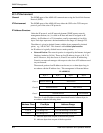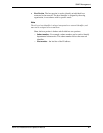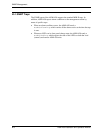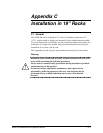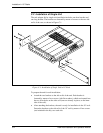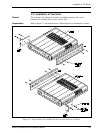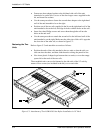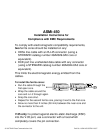
SNMP Management
B-6 ASMi-450 Installation and Operation Manual
B.3 IP Environment
General
The SNMP agent of the ASMi-450 communicates using the Serial Link Internet
Protocol (SLIP).
IP Environment
The SNMP agent of the ASMi-450 uses either the UDP or the TCP transport
protocol, part of the suite of IP protocols.
IP Address Structure
Under the IP protocol, each IP network element (SNMP agents, network
management stations, etc.) is called an IP host and must be assigned an IP
address. An IP address is a 32-bit number, usually represented as four 8-bit
bytes. Each byte represents a decimal number in the range of 0 through 255.
The address is given in decimal format, with the bytes separated by decimal
points, e.g., 164.90.70.47. This format is called dotted quad notation.
An IP address is logically divided into two main portions:
• Network Portion. The network portion is assigned by the Internet Assigned
Numbers Authority (IANA). There are five IP address classes: A, B, C, D,
and E. However, only the classes A, B and C are used for IP addressing.
Consult your network manager with respect to the class of IP addresses used
on your network.
The network portion of an IP address can be one, two or three bytes long, in
accordance with the IP address class. This arrangement is illustrated below:
IP ADDRESS
Byte 1 Byte 2 Byte 3 Byte 4
Class A Network Portion Host Portion
Class B Network Portion Host Portion
Class C Network Portion Host Portion
The class of each IP address can be determined from its leftmost byte, in
accordance with the following chart:
Address Class First Byte Address Range
Class A 0 through 127 0.H.H.H through 127.H.H.H
Class B 128 through 191 128.N.H.H through 191.N.H.H
Class C 192 through 223 192.N.N.H through 223.N.N.H
N - indicates bytes that are part of the network portion
H - indicates bytes that are part of the host portion



